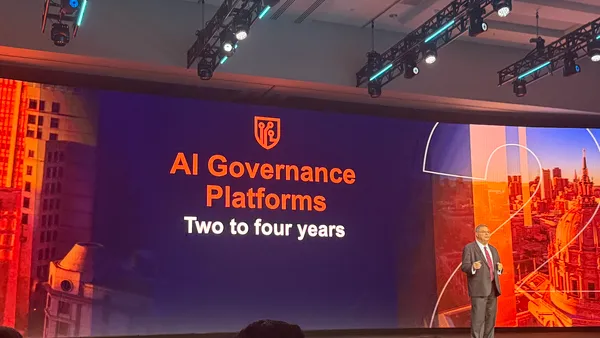More enterprise endeavors are baking AI into products and services, in a decentralization of the technology analysts had previously foreseen.
But without workers to make AI move forward, initiatives can stall.
Emerging tech have consistently comprised around one-third of all technology job postings in the last 18 months, according to CompTIA data. And although a recent Gartner survey showed 7 in 10 executives currently say they have or can source the necessary AI talent, the skills gap is frequently cited as a barrier to AI adoption.
To attract and retain talent in AI, in-house training strategies can help companies fill open positions, analysts say. But only if there are teams clearly in charge of shaping training strategies — and if employers can convey a career path to boost employee retention.
Simply hiring talent is a terrible place to start en route to fulfilling AI aspirations, according to Sreekar Krishna, head of AI for KPMG US.
"An institution cannot become an AI company just by going and hiring data scientists," Krishna said. "Worst strategy ever."
Salary trends show this approach would be costly, too. The average yearly salary for data and AI professionals last year was $146,000, according to O'Reilly data. This salary neared the top of the wage range among surveyed technologists.
A hiring-first approach to talent sourcing can also introduce a difficult work dynamic, according to Krishna.
"You put people who have no business knowledge in the midst of a bunch of people who know a lot about the business, but don't know much about data and analytics," Krishna said.
Retention and training
Sam’s Club, a division of Walmart, has worked to create a compelling employee value proposition for technologists, said Vinod Bidarkoppa, CTO at Sam's Club.
"We are a membership company and finite SKU business, which means we have rich data across these dimensions," said Bidarkoppa in an email. "Match that with millions of transactions across various shopping channels, we have a gold mine of rich data which is the fuel to design and deploy AI models at scale."
Organizations looking to put in place training can start by designating a limited set of people clearly in charge of the process, said Rowan Curran, analyst at Forrester.
"If it's everybody's responsibility, then it's nobody's responsibility," said Curran. A designated team can focus on developing best practices, training guides, case studies from other parts of the organization and other resources to advance training.
Knowledge management platforms, such as SharePoint or other collaborative sites, is one strategy larger organizations with multiple analytics teams rely on to centralize training resources, Curran said. To boost retention, leaders must convey how getting involved with these training opportunities can impact their career track.
And because AI depends on data to deliver value, infusing data literacy across all levels of the business pays off for institutions that have put that strategy into practice.
"You have to hire technologists who are actually teachers first," said Krishna.











